J.A. Seazer
출생 : 1948-10-06, Miyazaki Prefecture, Japan
약력
Takaaki Terahara (寺原 孝明 Terahara Takaaki), known professionally as Julius Arnest "J.A." Caesar (born 6 October 1948), is a Japanese film and theater music composer. Seazer enjoyed popularity among students in Japan during the 1960s, and worked closely with director Shuji Terayama and his theater Tenjo Sajiki until Terayama's death (besides incidental music, he wrote a few full-fledged rock operas for Tenjo Sajiki, including Shintokumaru). He is a member of the theatrical company Experimental Laboratory of Theatre ◎ Universal Gravitation (演劇実験室◎万有引力 Engeki-Jikkenshitsu Ban'yū Inryoku), better known as just Ban'yū Inryoku. He gained more mainstream attention for his songs composed for the anime Revolutionary Girl Utena, and has also composed the score to the animated film adaptation of Suehiro Maruo's manga Mr. Arashi's Amazing Freak Show (also known as Midori or Shojo-tsubaki).
-- Wikipedia

Himself
The documentary to find the "true Shuji Terayama".

Himself
A documentary about Morisaki Henrik, AKA Terayama Henrik, who became Terayama Shuji's adopted little brother after his death. Henrik continued Terayama's legacy in his own way after the passing of his collaborator and brother.

Music
Based on Minoru Nagao's 1969 experimental book Illustrator: Basara ningen.

Music
A bus full of cult members gets stuck in snow. The cult has to stay in a mountain hotel. Strange things start to happen...
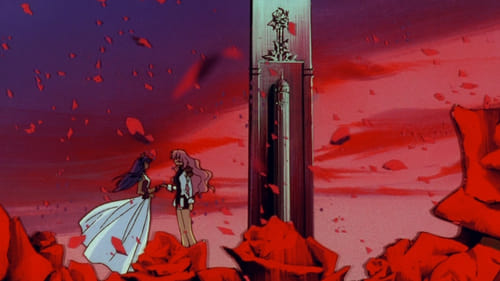
Original Music Composer
기숙사제의 전문학교 오오토리 학원에 전학 온 텐죠 우테나는 교내에서 '장미의 신부'라고 불리우는 소녀 히메미야 안시와 만나게 되고, 그 때문에 학생들간의 결투에 휘말려든다. 우테나는 점점 안시와 가까워지지만 그럴 수록 안시가 감추고 있던 비밀을 하나 둘 알아가게 된다. 결국 우테나는 안시와 함께 '바깥세계'로 탈출하기로 결심하는데...
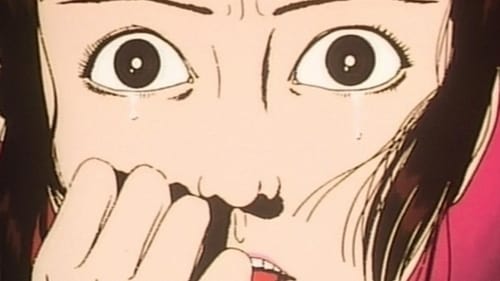
Original Music Composer
다리밑에서 꽃을 팔던 가난한 소녀 미도리는 홀어머니가 돌아가시자 어느 서커스단에게 팔려가게 된다. 하지만 이 서커스단은 프릭쇼라는 기형적인 사람들을 구경거리로 삼는 곳이였다. 이곳에서 미도리는 매일 단원들에게 학대를 당하게 되는데...
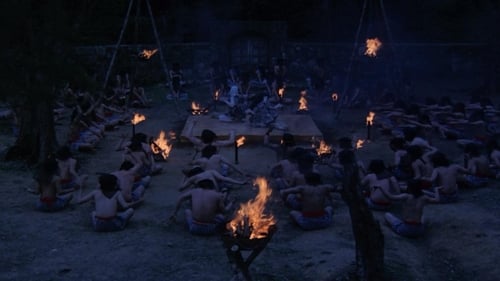
Original Music Composer
A surreal, isolated village sees its inhabitants gradually leave behind their mutual traditions and superstitions as they leave for the city. Among them are two cousins who love each other and who get into a quarrel with other villagers.

Music
This is Shuji Terayama memorial performance from 1983.
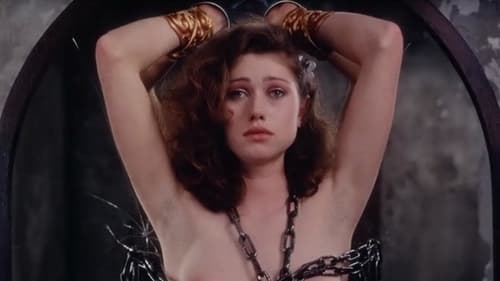
Music
Pauline Reage의 소설 「O양 이야기」의 속편을 원작으로 한 이 영화는 1920년대 중국을 배경으로 “O”라는 여인과 스티븐 경과의 도착적인 사랑을 그렸다. 상하이에서 카지노를 소유하고 있는 스티븐 경은 반체제 운동가들을 위해 자금을 지원하기도 한다. 하지만 가학적인 사랑을 즐기는 그는, 자기와 사랑에 빠진 그의 애인의 자신에 대한 사랑을 증명하기 위한 일종의 게임으로 “O”를 사창가로 보낸다.
영화제 소개글. 영화는 한 명의 소녀가 “O”라는 창부가 되는 곳에서 시작한다. 무대는 1928년 홍콩, 한 소녀가 스테판 유에게 이끌려 창관인 “춘모루”로 간다. 그녀는 두 사람의 사랑을 확인하기 위해 창부가 되는 것이다. 여주인은 소녀를 발가벗기고 화장을 시킨 후 말한다. “너의 몸은 이미 손님의 것, 마음대로 씻거나, 더럽혀서는 안 된다”. 그리고 소녀는 점점 “O”가 되어 가고 영화는 처음부터 하드 코어가 아니라 점점 하드 코어로 되어 간다. 이 영화는 폴린 레아주 “O의 이야기”를 원작으로 하고 있다. 테라야마 감독의 작품 중 이 파리에서 개봉 된 후 호평을 받고, 알랑 레네 감독의 , 오시마 나기사 감독의 을 제작했던 프로듀서 아나톨 도망이 그에게 이 영화를 제의했다. 프로듀서로부터의 제안은 하드코어 영화로서 크게 히트시키고 싶다는 것이었다. 이에 테라야마는 설정을 1920년대 중국으로 하여 원작에서 주요 등장 인물의 이름만 남기고, 스테판 유 역은 친구인 클라우스 킨스키를 기용하여 찍게 된다.(윤용순)

Music
아키라(明)는 죽은 어머니가 흥얼거리던 노래의 가사를 찾아 여행하고 있다. 소년은 교장이나 승려를 찾아가 가르침을 청하기도 한다. 소년이 여행 중에 생각하는 것은 죽은 어머니에 대한 일뿐이었다. 소년의 집 뒤편에 있는 토담 창고에는 지요조(千代女)라는 미친 여자가 살고 있는데, 소년이 그녀 가까이 가면 어머니가 호되게 꾸짖곤 했다. 항간의 소문에 의하면, 그녀는 아버지가 좋아했던 식모라고 한다. 어머니는 그런 사실을 알고 화가 나, 그녀를 10년 동안이나 창고에 가두고 있다는 것이다. 어느 날 아키라는 공놀이를 하는 아름다운 소녀를 만나, 그녀를 뒤쫓아간다. 그러다가 한 저택에 들어서게 되는데, 그곳에서 요괴들이 공놀이를 하고 있다. 그 크고 작은 공들 중에는 어머니의 머리도 끼어 있다. 그리고 어느새 무대는 아키라의 장례식으로 변한다. 그것은 꿈이었다. 아키라는 다시 여행을 떠나는데……

Music
Stage performance by the Tenjo Sajiki troupe.

Music
Shuji Terayama and J.A.Seazer's phantasmagoric folk-psych-symph-prog-rock opera. Historical Tenjo Sajiki performance from 1978.
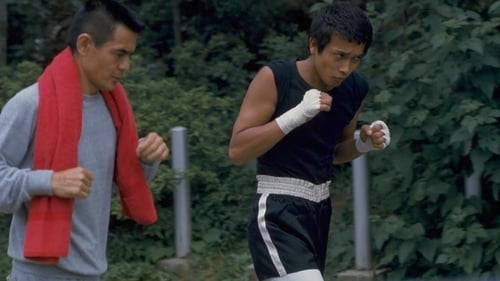
Original Music Composer
In the midst of a match, a successful boxer - Hayato, has had enough of the sport. He lets himself get knocked, quits boxing, leaving his wife and start living alone with his mangy dog. One day a young mediocre boxer knocks at the door and wants to be Hayatos apprentice.
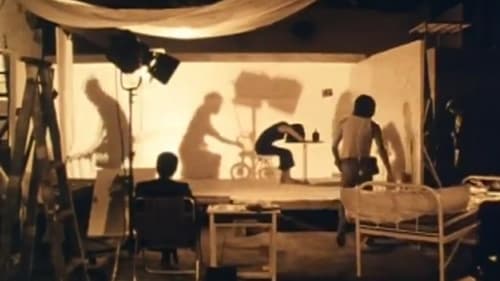
Music
As a family goes on with their day, the shadows on their walls lead a completely different life.

Music
Visions of characters by the seaside from one's memory are erased by the filmmaker's hand.

Music
Using bluescreen video techniques, Terayama playfully—and with a silent film theatricality—posits a series of postmodern vignettes featuring realities-within-realities as his protagonist attempts some kind of relationship with a nude woman on the screen-within-the-screen. In his struggles to “free” her, he exposes the absurd flimsiness, deceptiveness and mutability of both the cinema experience and our human dimension.

Music
In this Borgesian satire on knowledge and technology, bibliophilic desire leads to the construction of a pedal-powered reading machine. Resembling a combination of gymnastic contraption, printing press and early cinematic apparatus, the machine’s purpose remains ambiguous. And like this machine, Terayama’s film connects his work in poetry, motion picture and graphic design by weaving together printed and projected, still and moving images.

Music
An experimental short featuring people and nails.

Music
A group of young men go treasure hunting in the sea.

Original Music Composer
낯선 카니발풍의 마을을 배경으로 한 어린 소년들의 성년 이야기는 감독이 20년 후에 가지고 있는 추억의 재창조가 된다.

Tengu Kurama
낯선 카니발풍의 마을을 배경으로 한 어린 소년들의 성년 이야기는 감독이 20년 후에 가지고 있는 추억의 재창조가 된다.

Music
Originally made for the 100 Feet Film Festival hosted by Image Forum. However, to test the limits, Terayama Shūji willfully made use of 3 projectors to project 300 feet of film at the same time.

Music
An insight into the lecture "How to rule the others" given by Mr. Slobodan Cirkovic 'Roko', a well-known Yugoslav experimentalist on telepathy and hypnosis.
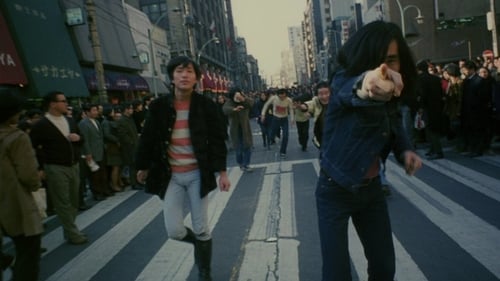
Longhaired Poet
마사루는 날아다니는 몽상에 잠기는 것이 취미다. 그를 제외한 그의 다른 가족 구성원들은 사회적으로나 경제적으로 자신이 처한 운명에 순종하며 살아간다. 반면 새로움을 꿈꾸는 마사루는 자신이 처한 상황에서 벗어나기 위해 안간힘을 쓴다. 하지만 대신 그가 얻는 것은 자신의 삶과 세계에 대한 크나큰 환멸뿐이다.

Music
마사루는 날아다니는 몽상에 잠기는 것이 취미다. 그를 제외한 그의 다른 가족 구성원들은 사회적으로나 경제적으로 자신이 처한 운명에 순종하며 살아간다. 반면 새로움을 꿈꾸는 마사루는 자신이 처한 상황에서 벗어나기 위해 안간힘을 쓴다. 하지만 대신 그가 얻는 것은 자신의 삶과 세계에 대한 크나큰 환멸뿐이다.
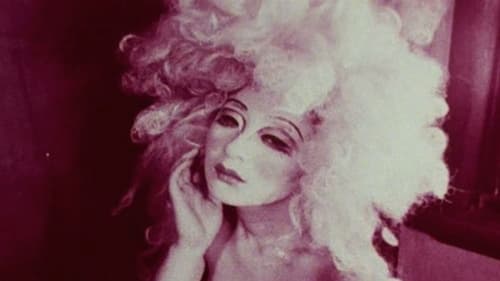
Music
In a Japanese colony, children overthrow their parental guardians and attempt to form a new society. Their plan spirals out of control and they are soon lost in a web of sexual deviation and violence.

Original Music Composer
Finished shooting in 1962, the movie’s cast was almost the same as its crew. With a bunch of experimental symbols such as skinny human body, clock and goat flow from one scene to another, the film explores the question of whether a man is a prisoner of time.











